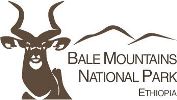Horas (Mineral Springs) And Tabalas (Hot Springs)
Mineral springs (“horas” in Oromo) and hot springs (“tabalas” in Oromo) are a common feature of the volcanic landscape of the Great Rift Valley, and many are found within the BMNP. Horas are traditionally used as salts supply for livestock by the local Oromo pastoralists while tabalas are used for healing purposes. It is well known that horas on the high altitude Afroalpine areas and at lower altitudes in the Harenna forest contribute to the seasonal movement of people and livestock within the BMNP (and in nearby areas). In 1990, an assessment of the use and physical/chemical properties of horas located at high altitudes (between 2900 – 3790 m a.s.l.) was undertaken by an MSc student visiting from Leicester University (Kemp-McCarthy 1990), although the results were not conclusive due to the methods employed. A survey conducted in Nov-Dec 2007 provided a preliminary account of the distribution, properties and use of both horas and hot-springs (“tabalas”) in the Harenna forest. A total of 47 horas and three tabalas were identified, with one tabala (Tabala Sof Omar) found within the park boundaries in the Ordoba area. Tabalas are used occasionally for healing skin and stomach illnesses and for celebrating a thanksgiving ceremony. Horas are used as a salt supplement for livestock and, in combination with availability of grazing, are linked to the seasonal movement of people and livestock within the forest (as in the Afroalpine). Six of the horas documented are currently important for their value for livestock and the Harenna forest horas seem to be much less saline (between 1mS and 3mS), hence of less quality, than the horas in the Sanetti plateau and only six of the 47 horas identified are regularly used: namely, Rasa, Waticha, Dofo, Dokke’, Habire’ and Higan. They are all considered as common property and open access by the local communities in the forest, who carefully maintain the sites through fencing, drainage and cleaning. In fact, horas in the Harenna forest are freely and regularly used by outsiders from Arsi region and from seasonal migrants from the south, who move in to the forest during the dry season to escape the aridity of their home districts. In addition to their clear socio-economic and cultural importance to local people, horas also affect wildlife and the ecosystem at large. Waters from the horas are not only appealing to livestock, but also to many wildlife species living in the forest. There was evidence of use of horas as salt-licks by warthogs, forest hogs, bushbucks and the mountain nyala. Due to the high concentration of both livestock and wildlife, horas are then an excellent hunting ground for the forest lion and for the leopard. The presence of these predators leads to occasional conflict with the pastoralists. Horas potentially have a substantial impact on the landscape, by creating patches of nutrients and acidity, although this has yet to be investigated thoroughly. By constantly discharging hydrothermal sediments, the source will automatically close over time, giving rise to a patch of hydrothermal deposits in the forest. Many “closed” horas were found in grasslands, hence horas are a probable cause for the formation of the great number of grasslands (or glades) in the forest. The way in which mineral waters affect the soils and vegetation across the Harenna landscape, is an interesting subject of study for the future. Horas are an expression of traditional ecological knowledge and of the strong coupling between natural and anthropogenic elements in the Harenna forest. Further, they reinforce the importance of the historical dimension to current use and the importance of engaging with the local inhabitants to document and design relevant management initiatives.
This research was undertaken by Giovanni Chiodi under the auspices of the Darwin Initiative funded Harenna project and the University of Aberdeen.
